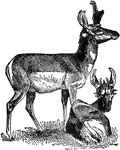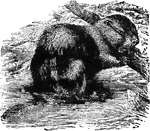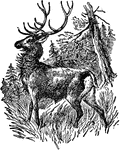Clipart tagged: ‘quadruped’

Prong-horn Antelope
"The Prong-horn Antelope inhabits the W. parts of North America, from 53 degrees N. to the plains of…

Beaver
"The Beaver is a quadruped of the order Rodentia, or gnawers, the only species of its genus. It is very…

Skeleton of the Deer
"The bones in the extremities of this the fleetest of quadrupeds are inclined very obliquely towards…



